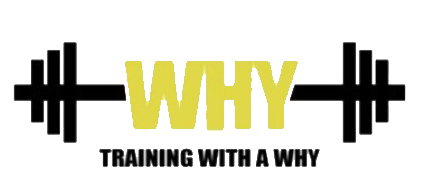The Zercher
Now I know it’s rare to see someone squatting regularly in a commercial gym, so asking you to perform a different type of squat variation is probably pushing my luck. However, I’m going to do it anyway. The zercher squat is a squat variation that has been around forever and is most popular in the strong man community. Unless you are an athlete whose strength coach had you perform the zercher squat, it is not likely that you have heard of or seen this type of squat done. It makes this list because of the benefits it offers aside from increasing leg strength. A zercher squat is performed with the weight in front of the body. It differs from a front squat in that it allows the weight to rest lower, closer to the body’s center of mass. I love front squats and they too can greatly improve many areas, but the zercher allows the weightlifter to rack the weight more easily than the front squat. Racking the weight while performing a zercher squat may be uncomfortable for some, but can be done by everyone. This is compared to racking during a front squat, which is nearly impossible for people with poor mobility.
The weight being racked in front of the core is a major component of this lift. A weightlifter performing a back squat is supposed to keep everything tight, structured, and full of tension. I say supposed to because many people never learn these aspects of a proper back squat. Some people may be able to get away without proper form, but until they learn to implement the tight, structured, and tension filled form, they will never reach their full potential on the back squat. You have to consciously think about creating tension in your core on a back squat. A major advantage of the zercher squat is that it eliminates any thought about tension in the abdominal cavity because it happens almost subconsciously. Even though the focus during the lift will be on areas other than the abdominal muscles, I can’t tell you how many times I have taught someone the zercher and then have them turn around in amazement about how much they could feel the exercise work their abdominal region. The tension created throughout the entire body and the pressure build up in the abdominal cavity is a major benefit of this lift and will positively impact you on everything else you do in the gym.
Instructions
- Place bar on crease of elbows (Use bar pad if needed)
- Put hands together with forearms pointed upwards locking the bar into place
- Make a “big” chest at the same time as you take a breath in
- Begin descent allowing your elbows to go between your knees at the bottom of movement
- Be sure to keep the bar pressed tightly against stomach (belly button region)
- Return to starting position while squeezing glutes at the top
The main reason people do not want to add the zercher to their programs is the rack position. I’m not going to sugar coat it, because, the truth is, it sucks. It’s uncomfortable, awkward, and for some can be painful. The bar is racked on the crease of your elbows. I always give my athletes and clients the choice of putting a pad on the bar to lessen the pressure. Some people like the pad, while others, including myself, think that the bulkiness adds to the awkwardness. A simple fix instead of the pad is to wear long sleeve shirts or hoodies that can help ease some of the discomfort of the bar on bare skin. But this is all personal preference, and you should do whatever feels best for you. If you choose to go with the bar to bare skin, I recommend using lifting chalk on the crease of your elbows to prevent the bar from slipping.
Now that we understand that the rack position is awful we can move on to the actual lift. Once you have the bar on the crease of your elbows put your hands together with your forearms pointing upwards locking the bar into place. Make sure your spine is tight and structured to support the weight, similar to the back squat. Think about puffing your chest out to create a “big chest” to help tighten your thoracic spine even more. The key to the zercher is that you want to keep the bar against your belly. Allowing the bar to float away from your stomach causes the weight of the bar to pull you forward which will add strain to your back. A good point of reference is resting the bar close to your belly button. During the lift, keep your shoulders as relaxed as possible. Avoid shrugging your shoulders as this will cause the bar to rise upwards. I make it a point to tell all my athletes and clients to keep the same stance as they would in their back squat because consistency can help with overall improvement. When you feel ready with a sturdy stance, start the descent. Your elbows should slide in between your knees at the bottom of the squat. Position your arms close enough together in the rack position and think about pushing your knees outwards as you squat, to make sure the elbows between the knees position is possible. Start the ascent and return to the starting position, squeezing your glutes at the top.
If you are brave enough to try this squat variation and dedicated enough to squat in the first place you will reap the benefits of this lift. I promise you that it will help with a number of other lifts in the gym. Be sure to check out the video below for a visual demonstration of this lift. If you do give it a try let me know what you think and also remember to subscribe to this site so that you can be notified of future posts coming soon. Thanks and enjoy the zercher!



I could not refrain from commenting. Very well written!
Enjoyed every bit of your blog.Thanks Again.